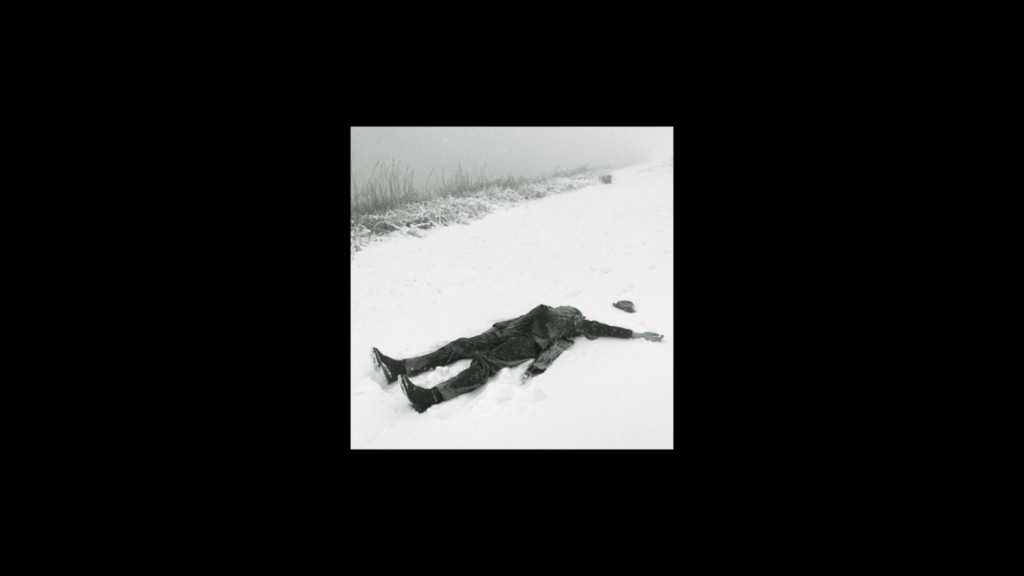Snow White Is Drained

Stanley Schtinter as Robert Walser.
“I do know the story nicely,” says the Snow White of Robert Walser’s Schneewittchen, “concerning the apple, the coffin. Be so form as to inform me extra. Why does nothing else come to thoughts? Should you grasp on to those particulars? Should you endlessly draw on them?” In Stanley Schtinter’s 2024 adaptation of Walser’s 1901 dramolette, characters from the Grimm fairy story exhaust themselves and their pictures in a recounting of the story during which they’re inscribed. The movie is an entire efficiency of the English translation of Walser’s textual content, which picks up the place the Grimm story leaves off. The queen, who has tried to kill Snow White twice, desires her daughter to neglect every part. Underneath her orders, the hunter, her lover and Snow White’s would-be murderer, reenacts the try on Snow White’s life. There’s dialogue of the need for demise, springtime, contemporary backyard air, kisses, snow, and sleep. The characters chastise one another for telling fairy tales, rehearsing scripts, making use of “gesture and method.”
Schneewittchen is a shot-for-shot remake of one other experimental adaptation of Walser’s textual content, João César Monteiro’s Branca de Neve (2000). As in Monteiro’s model, the drama takes place in full darkness, towards a sonic atmosphere of rain, wind, and birdsong. We hear, however don’t see, the characters. Punctuating the darkness: temporary photographs of a blue sky, typically clouded, typically unclouded, blinding within the black theater, scenic breaks during which we discover ourselves, with Snow White, “immaculately watching an immaculate sky.” However Sean Worth Williams’s skies are much less saturated than Monteiro’s. The environmental sound, by the artist Joshua Bonnetta, is louder within the combine. The flute and piano are gone.
Schtinter’s model premiered in New York on the event of Disney’s 2025 live-action remake of their 1937 animated basic Snow White and the Seven Dwarfs. Within the spirit of Disney, Schneewittchen has additionally been merchandised: at Anthology, Schtinter cheekily supplied Schneewittchen snow globes (empty) and Schneewittchen T-shirts (clean). Like a correct Hollywood remake, Schneewittchen has an A-list solid (Julie Christie is the queen; Stacy Martin is Snow White; Hanns Zischler is the hunter; and Toby Jones is the prince). These shiny professionals ship blocks of dispassionate dialogue as if shrink-wrapped, their high-budget polish contrasting humorously with the movie’s starkness.
Apart from sky and the pink curtain of the opening and ending credit, the sixty-seven-minute movie comprises solely two different pictures. The movie opens with a sequence of black-and-white stills of Robert Walser mendacity useless within the snow exterior the Switzerland asylum the place he’d been residing, a scene initially captured by a police photographer on Christmas, 1956. His unseeing face turned skyward, Walser is the image of his personal Snow White, who “lengthy[s] for that open coffin, laid out as this frozen picture.” The place Monteiro makes use of the extensively circulated pictures of Walser’s actual corpse, right here Schtinter himself performs Walser, restaging the “expensive winter scene” on location in Herisau. The impact is barely comedian, Schtinter’s youthful determine barely too photogenic, too clear. Lastly, Monteiro’s movie closes with a beguiling shot of the director standing in entrance of a tree; Schtinter reveals us solely a tree.
“Somewhat than look, I’d quite hear,” says Snow White. “I’m speechless,” replies the prince, “imageless at such a picture.” “Woe unto me that I have to hear,” says Snow White. “Woe unto us that I have to see,” replies the prince. In his third-order reenactment of the Grimms’ story, Schtinter joins Monteiro and Walser in questioning our compulsion to endlessly repeat the identical story, endlessly draw on the identical particulars. In such a state of exhaustion, it is likely to be higher to not see or hear something in any respect. However the movie isn’t a plain negation, a repudiation of the cinematic tradition of the remake, and though it participates in what would possibly seem like the degradation of its sources, it’s not parody. Schtinter remakes with cautious ambivalence. He finds for us a spot between speechlessness and imagelessness, between empty speech, exhausted picture, and the brand new. In Walser’s textual content, Snow White in the end accepts the queen and the hunter’s story. “Say what you need. I imagine you.” Refusal or affirmation? Snow in a silent winter world.
Alec Mapes-Frances is a author and designer residing in New York.

0 Comment